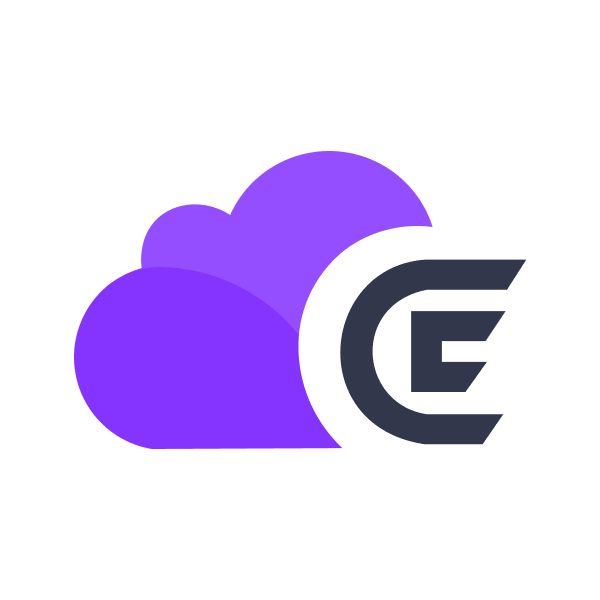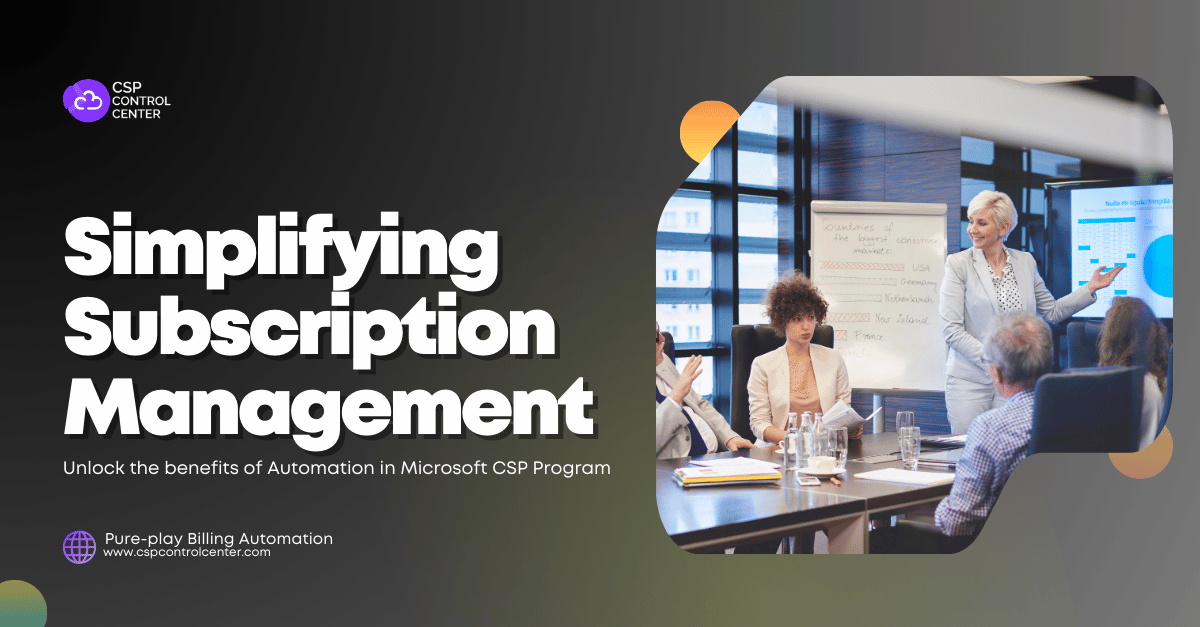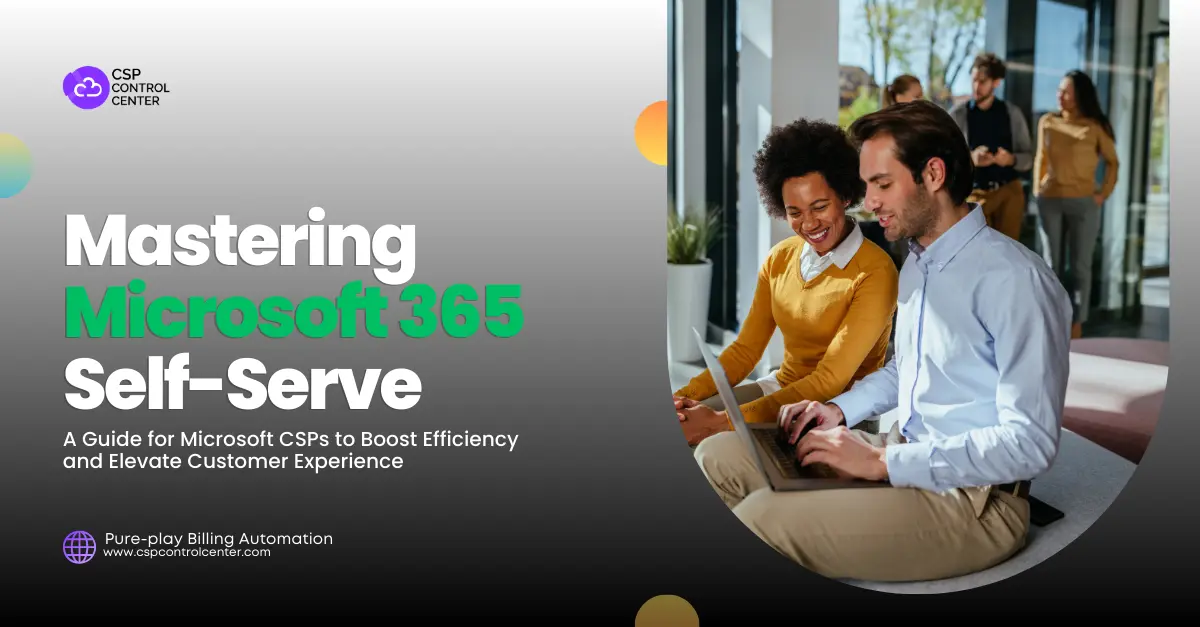The Complexity of Subscription Management in Microsoft CSP Program
Microsoft’s licensing landscape is complex due to various factors. The different product offerings, like Microsoft 365, Azure, and Dynamics 365, each have unique licensing models based on user or consumption levels. Frequent updates and changes to licensing rules further add to this complexity. Different types of agreements (such as Enterprise Agreements or CSP models) also vary by region, customer size, and industry. Lastly, compliance requirements and bundling options create challenges for service delivery and pricing alignment across diverse customer needs.
Diverse Product Portfolio
From Office 365 and Microsoft 365 to Azure and Dynamics 365, Microsoft offers a wide range of products and services. Each of these product lines offers different licensing structures, subscription plans, and pricing models.
Customizable Plans
For many Microsoft products, customers have the flexibility to select and combine services to fit their specific requirements. While this customization is beneficial, it adds another layer of complexity for Microsoft CSPs.
Frequent Updates and Changes
Microsoft frequently updates its products, launches new services, and modifies licensing agreements. Staying informed about these changes and their effects on existing and new customers is a continuous challenge.
Challenges of Manual Subscription Management
Managing licenses in the CSP program is already complex, and relying on manual processes for Subscription Management increases the challenges further. For small-scale CSPs, managing these tasks manually might be feasible. However, as the number of customers and licenses grows, manual processes quickly become unsustainable, leading to inefficiencies, increased costs, and customer dissatisfaction. Let us have a look at some of the most common issues of manual Subscription Management.
Human Errors
One of the most significant challenges in manual Subscription Management is human error. When handling a large number of customers and licenses, even experienced employees can make mistakes. These errors can include misassigning licenses, missing renewals, or incorrectly calculating charges. These can lead to customer dissatisfaction, billing disputes, operational inefficiencies, etc. Even a small mistake such as failing to deactivate a license after a subscription ends, can result in financial losses. According to a survey by Emplifi, “86 Percent of Consumers Will Leave a Brand They Trusted After Only Two Poor Customer Experiences.”
Delayed Provisioning and De-provisioning
Manual Subscription Management often leads to delays in provisioning and de-provisioning. For new customers, this can slow onboarding leading to frustration and poor initial experience. Slow de-provisioning can result in customers being charged for licenses they no longer need leading to disputes and dissatisfaction.
Lack of Visibility
Clear and real-time visibility into the status of all licenses is necessary for effective Subscription Management. If you are manually managing your license, you will be unable to gain a comprehensive view of license usage, renewals, expirations, and customer-specific requirements. This can lead to revenue leakage, limit your ability to up-sell or cross-sell services, make forecasting future licensing needs difficult, and create gaps in service delivery.
Time-Consuming
Managing licenses manually takes up a lot of time and requires significant effort. It can divert resources away from more strategic activities hindering your ability to grow your business and deliver value to customers. As your employees spend excessive time doing repetitive tasks, it can lead to fatigue which can further increase the likelihood of errors.
Increased Costs
Manual Subscription Management is labor-intensive and requires more human resources to handle administrative tasks such as license tracking, billing, and reporting. Having larger teams for managing licenses can drive up operational costs. Moreover, errors in manual processes can result in financial penalties or refunds. Over time, these additional costs cut into your profit margins and make manual processes less cost-efficient.
Scalability Challenges
As your customer base grows, the volume of licenses to manage increases exponentially. In such a scenario, scaling manual subscription management processes becomes very difficult. As the number of customers increases you need to handle a greater variety of licenses, subscription models, and customer requirements. Manual processes can lead to delays, service disruptions, and operational bottlenecks. This can limit your growth potential and reduce your ability to handle large-scale license operations.
Difficulty in Handling Complex Scenarios
Managing complex licensing scenarios is another challenge with manual processes. These include mid-term changes to subscriptions, handling hybrid environments, custom license configurations, and managing volume licensing agreements. Handling such complexity manually is not only difficult but also highly error-prone. You will need to track each customer’s unique setup, monitor changing usage patterns, and ensure compliance with Microsoft’s licensing rules.
Compliance Risks
Ensuring compliance with Microsoft’s licensing terms is crucial for your Microsoft CSP business. Microsoft regularly updates its licensing terms, pricing structures, and product offerings. You need to stay compliant with these changes to avoid legal and financial penalties. With a manual process, you may struggle to keep up with these frequent updates and non-compliance can lead to audits and fines and cause damage to your reputation.
Benefits of Automation in Subscription Management
Streamlined Operations
Automating Subscription Management eliminates the need for repetitive, manual tasks such as provisioning and billing. This reduces the manual effort and time spent on these tasks and allows you to instantly activate new licenses or remove unused ones. This also frees up valuable time allowing you to focus on higher-level business activities.
Improved Accuracy and Reduced Errors
Automation makes tasks like assigning licenses, tracking renewals, and billing more accurate and consistent. By doing so human errors are reduced and licenses are managed correctly. This not only ensures compliance with Microsoft’s licensing terms but also prevents overbilling or underbilling.
Real-Time Visibility and Reporting
Automation gives you access to up-to-date licensing information across your entire customer base. Gaining real-time insights into license usage, renewals, and subscription statuses, automation ensures that you are able to make informed business decisions. By generating comprehensive reports, you can identify trends, monitor compliance, and detect underutilized licenses. This helps optimize resource allocation and improve service delivery.
Enhanced Scalability
As the number of customers and licenses increases, automation allows you to scale your operations and processes efficiently. Automated Subscription Management systems are capable of handling higher volumes of transactions without needing a proportional increase in staff. This allows you to grow your business without any disruptions.
Better Customer Experience
With faster and more accurate service delivery, automation helps you provide a better customer experience. The instant provisioning and de-provisioning of licenses reduces wait times for customers and ensures that they can access services as soon as needed. Automation also allows you to focus more on providing value-added services such as strategic consulting or customized solutions. This customer-centric approach enhances the overall customer experience.
Cost Reduction
By automating manual tasks, you can reduce labor costs and minimize operational overhead. With automation, you can also track unutilized licenses, identify potential cost-saving opportunities, and reallocate resources more efficiently to maximize profitability. Apart from this, accurate billing reduces revenue leakage and improves cash flow. Automation also improves forecasting capabilities that help in better financial planning and investments.
Key Features of Subscription Management Automation
Automation can be applied to various aspects of Subscription Management within the Microsoft CSP program. Let us explore the key areas where automation can be applied in Subscription Management:
License Provisioning and De-provisioning
Automation can be used for the provisioning and de-provisioning of licenses ensuring that services are delivered instantly and accurately. Using automation licenses can be assigned automatically based on customer subscriptions and usage patterns. Similarly, licenses can be automatically terminated when subscriptions expire or are downgraded. This reduces delays, enhances service delivery, and minimizes the risk of errors.
Subscription Lifecycle Management
Automation can be used to simplify the entire lifecycle of subscriptions, from onboarding and renewals to cancellations. Read our blog to learn more about Mastering Customer Onboarding for Microsoft CSPs here. Automated systems can track subscription start and end dates, renewal periods, and license upgrades or downgrades. This ensures that renewals are not missed, and services are seamlessly extended, enhancing customer satisfaction.
Automated Billing and Invoicing
Automation ensures that customers are accurately billed based on their real-time usage of licenses, reducing the risk of overcharging or undercharging. You can leverage automated billing for handling different pricing models like pay-per-use or fixed subscriptions.
Usage Monitoring
Using automation, you can easily track license usage in real-time and gain insights into how customers are using their licenses. You can identify underutilized or unutilized licenses and optimize resource allocation or offer tailored recommendations to customers.
Implementing Automation in Microsoft CSP Subscription Management
Managing licenses effectively is vital for business success. However, it can be time-consuming and prone to errors when handled manually. Implementing automation in Microsoft CSP Subscription Management can streamline processes, increase accuracy, reduce operational costs, and enhance customer experience. Implementing automation in Microsoft CSP Subscription Management involves several key steps:
Assessment and Planning
The first step of implementing automation for Microsoft CSP Subscription Management is to assess your current processes thoroughly. Begin by evaluating current manual processes involved in license provisioning, billing, renewal, compliance monitoring, and reporting. Identify pain points and areas where automation can improve efficiency and accuracy. Clearly outline the primary goals of implementing automation. These can include improving efficiency, reducing manual errors, cutting down operational costs, and enhancing customer satisfaction. Develop a detailed plan outlining the steps involved in implementing automation and determine the budget and resources you can allocate to this project, considering both the initial investment and long-term operational costs. Set a realistic timeline for implementation, including milestones for each phase of the project.
Selection of Automation Tools
Once the assessment is complete, the next step is to select the right tools and platforms to automate Subscription Management. Start by researching and comparing different automation tools available for Microsoft CSP Subscription Management. Consider factors like features, scalability, cost, ease of use, and alignment with Microsoft’s APIs. Look for a platform offering essential features such as automatic license provisioning and de-provisioning, usage monitoring and reporting, billing integration, and customer self-service capabilities. Also, ensure that the chosen tool can integrate seamlessly with your existing systems such as CRM. Additionally, consider the level of support provided by the vendor.
Integration with Existing Systems
Determine how the automation tool will interact with your existing systems, such as CRM, billing, and other business tools. Integration with your CRM system is needed to maintain a unified view of customer data and licensing information. Similarly, integration with the billing system ensures accurate and timely invoicing based on license usage and allocations. Create detailed plans for integrating the automation tools with your existing systems, including data mapping and API connections. If required, create a plan for custom integration development to address any gaps between systems.
Data Migration and Cleansing
It is essential to migrate your existing license data into the automation tools. Start by reviewing your existing Subscription Management data. Clean up outdated, inaccurate, or duplicated information to ensure smooth functioning. Develop a comprehensive plan for migrating existing license data to the new system that ensures no disruptions in business operations. Start with a phased approach where you transfer a portion of the data to test the processes before proceeding with the full migration.
Training and Change Management
Implementing automation is just one part, to ensure its success, it is important to prepare a change management strategy and provide proper training to your employees. Assess the training needs of different user groups and develop comprehensive training programs tailored to different roles and responsibilities. Communicate the benefits of automation, such as increased efficiency, reduced errors, and improved customer satisfaction. Also, address any concerns or resistance to change from employees.
Continuous Improvement
Automation is not a one-time process but requires continuous monitoring and optimization to deliver value. After implementation, it’s important to track the performance of the automation system. Key metrics you can track include time saved, error reduction, customer satisfaction, etc. Use feedback from employees and customers to Identify and address any issues with the automation system. Identify additional areas where automation can be applied to further improve your Subscription Management process. Keep up to date with any changes or announcements by Microsoft and update your processes accordingly. Click here to learn about all partner center announcements. Doing the above will ensure that your processes remain effective and relevant as your business grows and customer needs evolve.
Simplify Microsoft CSP Subscription Management with C3
CSP Control Center or C3 offers an all-in-one platform that can help automate license provisioning, billing, and monitoring. With features designed to handle the complexity of Microsoft’s diverse product portfolio, C3 empowers you to eliminate manual errors, reduce costs, and scale your business with ease. C3 is the ultimate Microsoft CSP billing automation tool with features such as:
- Automated License Provisioning & De-provisioning: Instantly assign or remove licenses based on customer needs without manual intervention.
- Self-Service Marketplace: Allow customers to purchase, provision, and manage their cloud resources directly.
- Automated Billing and Invoicing: Ensure accurate and timely billing by automating the entire invoicing process, reducing the risk of errors, and improving cash flow.
- Customizable Reports: Generate detailed reports on license usage, billing, and compliance to make data-driven business decisions.
Book a demo to learn more about simplifying Subscription Management with C3.

 CSP Control Center
CSP Control Center
 CloudEvents
CloudEvents


